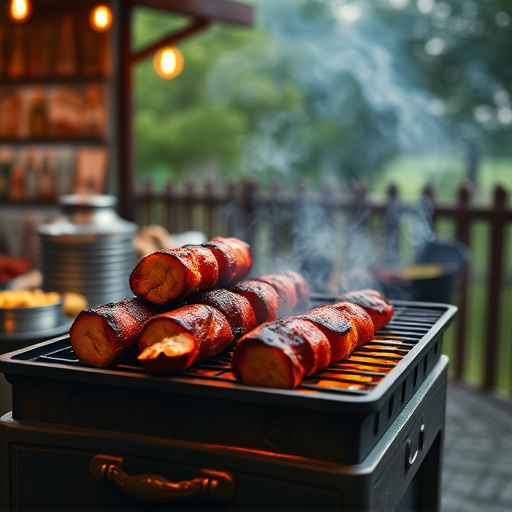Creating a perfect DIY BBQ jerky involves selecting lean cuts like sirloin or chicken breast, balancing fat content, and using a blend of seasonings for flavor. Drying methods include oven drying, dehydrating, or smoking, each offering unique texture and taste. Precise cutting and portioning ensure consistency, with customizable flavor combinations like Sriracha teriyaki or classic garlic, paprika blends. Proper storage in airtight containers or vacuum-sealed bags maintains freshness up to 2 weeks. Grilling at indirect heat completes the recipe for a delicious BBQ jerky experience.
Get ready to fire up your summer grill with a delicious DIY BBQ jerky recipe! Perfect for outdoor adventures or as a healthy snack, making your own jerky allows you to customize flavors and textures. From choosing the best meats to mastering grilling techniques, this guide covers everything. Learn about effective seasoning blends, various drying methods, and creative flavor combinations. With expert tips on cutting, storing, and grilling, you’ll be whipping up mouthwatering BBQ jerky that’s sure to impress.
- Choosing the Right Meats for Your BBQ Jerky
- Seasoning and Marinades: The Heart of Your Recipe
- Drying Methods: Oven vs. Dehydrator vs. Smoke
- Cutting and Portioning Tips for Perfect Jerky
- Creative Flavor Combinations to Experiment With
- Storage and Shelf Life: Keeping Your Jerky Fresh
- Grilling Techniques for Optimal BBQ Jerky Taste
Choosing the Right Meats for Your BBQ Jerky
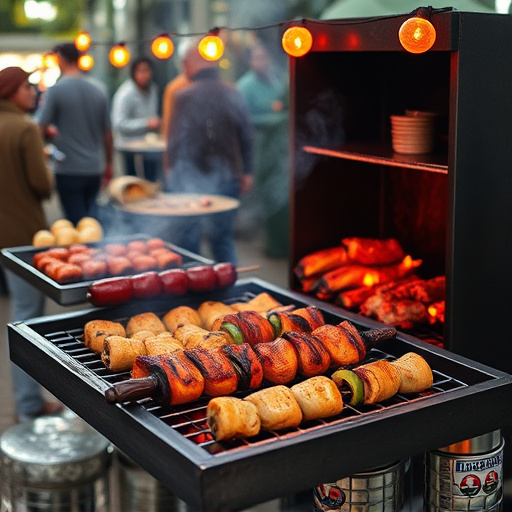
When crafting a backyard BBQ jerky recipe, selecting the perfect meats is the first step to success. Opt for lean cuts of meat, such as sirloin or chicken breast, to ensure your jerky turns out tender and not too greasy. These cuts will also cook evenly, resulting in a consistent texture throughout each piece. For an authentic BBQ flavor, choose meats that are at least 80% lean to 20% fat, balancing taste and quality.
Consider the marbling of the meat as well; a subtle amount of fat helps retain moisture during the drying process, preventing your jerky from becoming overly dry or tough. Remember, the goal is to create a delicious, long-lasting BBQ jerky recipe that’s perfect for summer grilling, so choosing the right meats is key to achieving that mouthwatering, smoky flavor.
Seasoning and Marinades: The Heart of Your Recipe
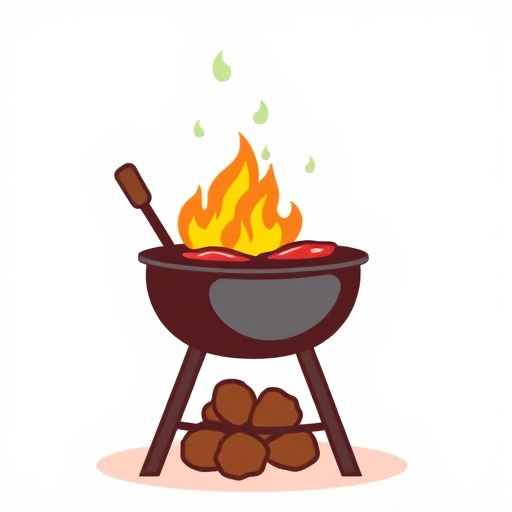
Seasoning and marinades play a pivotal role in crafting the perfect backyard BBQ jerky recipe for summer grilling. They are more than just flavor enhancers; they’re the foundation upon which your jerky’s taste and quality rest. A well-balanced blend of spices and acids can transform simple beef strips into mouthwatering, smoky treats that’ll have your family and friends craving more.
When selecting or creating your marinade, consider a combination of salt for preservation, garlic and onions for pungent aromatics, paprika and chili powder for heat and depth, and herbs like thyme and black pepper for a complex finish. Acids like lemon juice or vinegar help tenderize the meat while adding brightness to the overall profile. Experimenting with different combinations will allow you to tailor your BBQ jerky recipe to suit personal tastes, ensuring that every bite is an explosion of flavor in perfect harmony with the summer season.
Drying Methods: Oven vs. Dehydrator vs. Smoke
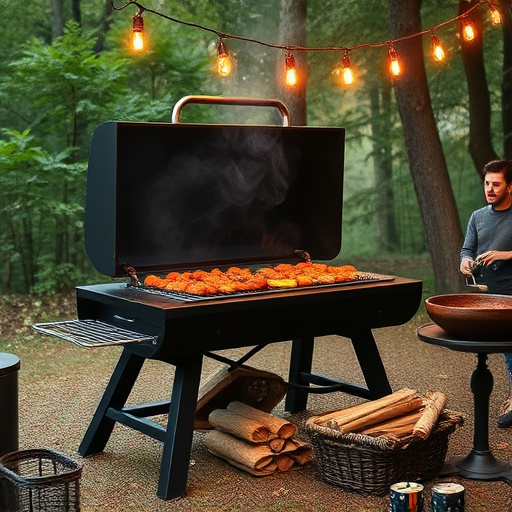
When it comes to drying your homemade BBQ jerky, there are three primary methods to consider: using an oven, a dehydrator, or smoking. Each has its unique advantages and can significantly impact the final flavor and texture of your jerky. Oven drying is a convenient method that allows for precise temperature control, making it ideal for achieving a consistent, crispy texture. However, it may lack the smoky aroma and flavor that outdoor grilling enthusiasts seek.
Dehydrators are designed specifically for food dehydration and offer even heat distribution, resulting in perfectly dry jerky without overcooking or burning. While this method is efficient, some purists argue that it lacks the depth of flavor imparted by smoking. Smoking your BBQ jerky over low-temperature coals or wood chips adds a rich, smoky taste that’s characteristic of true barbecue. This technique takes longer but is favored for its ability to preserve the natural juices and create a distinctive flavor profile.
Cutting and Portioning Tips for Perfect Jerky
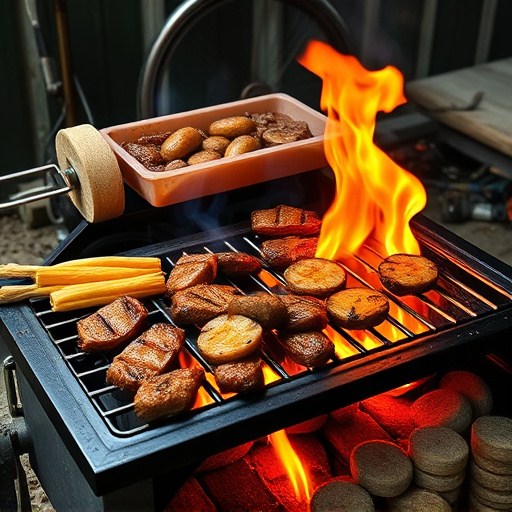
When preparing your BBQ jerky recipe, proper cutting and portioning techniques are key to achieving the perfect texture and taste. Start by trimming any visible fat from your meat selection—a lean cut will result in a more tender jerky. Slice the meat into thin strips, ensuring consistency throughout; this even cooking promotes a uniform texture. Aim for approximately 1/8-inch thickness for optimal drying and snacking enjoyment.
Portioning is equally important. Divide your jerky into manageable servings to control both storage and consumption. Consider packaging individual portions in airtight containers or resealable bags, allowing you to enjoy delicious, freshly made BBQ jerky throughout the summer months.
Creative Flavor Combinations to Experiment With
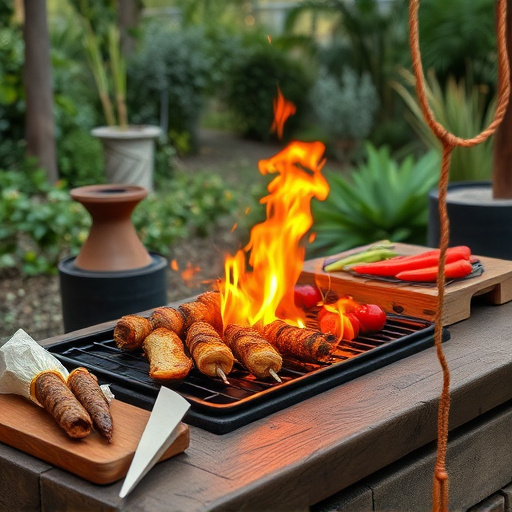
When crafting your BBQ jerky recipe, don’t be afraid to get creative with flavor combinations. The beauty of homemade jerky is the ability to customize it to your taste preferences. Experiment with unique pairings like a spicy Sriracha teriyaki blend, or try a sweet and savory combination of brown sugar and soy sauce. For a smoky twist, incorporate liquid smoke or a dash of chili powder for an extra kick. Don’t overlook herbs and spices either—a mix of garlic, paprika, and black pepper adds depth and complexity to your jerky. With countless possibilities, the sky’s the limit when it comes to creating your ideal BBQ jerky recipe this summer.
Storage and Shelf Life: Keeping Your Jerky Fresh
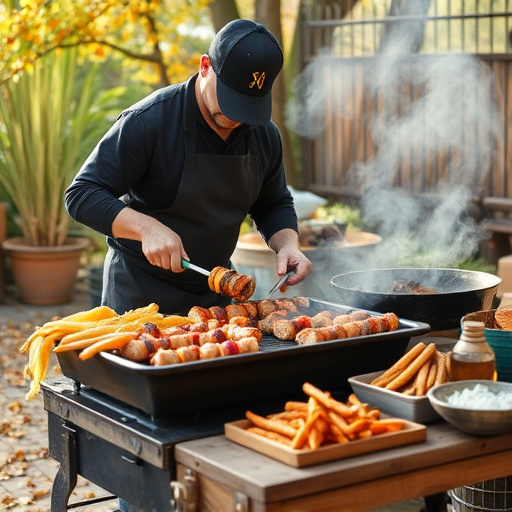
Storing your homemade BBQ jerky properly is key to maintaining its freshness and extending its shelf life. Once cooled, transfer the jerky to an airtight container or a sealed plastic bag, ensuring it’s as dry as possible. Store it in a cool, dark place; a pantry or refrigerator are ideal options. This will prevent bacteria growth and keep your jerky tasting delicious for up to 2 weeks. If you’re using vacuum-sealing technology, you can further prolong the life of your jerky by removing all air from the bag before sealing, creating a virtually bacteria-free environment.
Remember, proper storage is essential when it comes to this popular BBQ Jerky Recipe. By keeping your creation fresh and safe, you can enjoy its savory flavor all summer long without worrying about spoilage.
Grilling Techniques for Optimal BBQ Jerky Taste
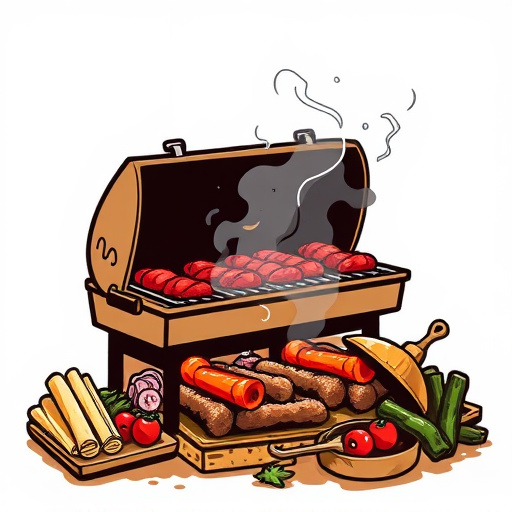
Grilling is an art that can elevate your BBQ jerky recipe to new heights. For the best results, opt for indirect heat grilling, which allows for slow cooking and helps retain the meat’s natural juices. This technique ensures a tender, flavorful jerky with just the right amount of crispness from the grill marks. When using a charcoal or gas grill, create a two-zone system: one side for direct heat to sear the meat and lock in flavors, and another side for indirect heat to finish cooking. This method allows you to control the temperature and prevent overcooking, resulting in a delicious, perfectly seasoned BBQ jerky recipe that will be the talk of your summer gatherings.
